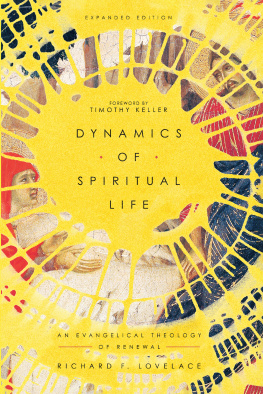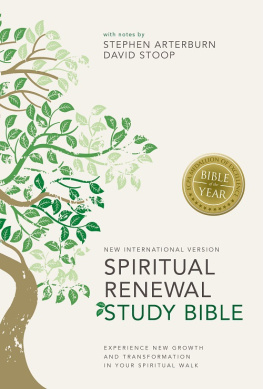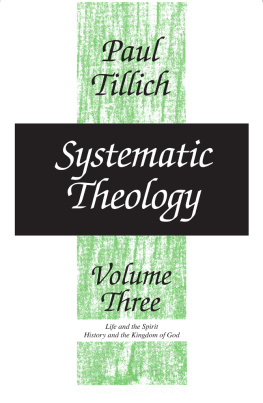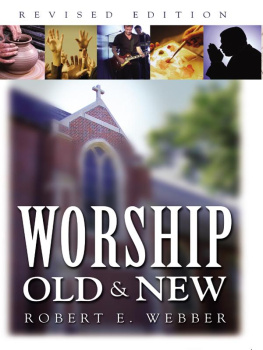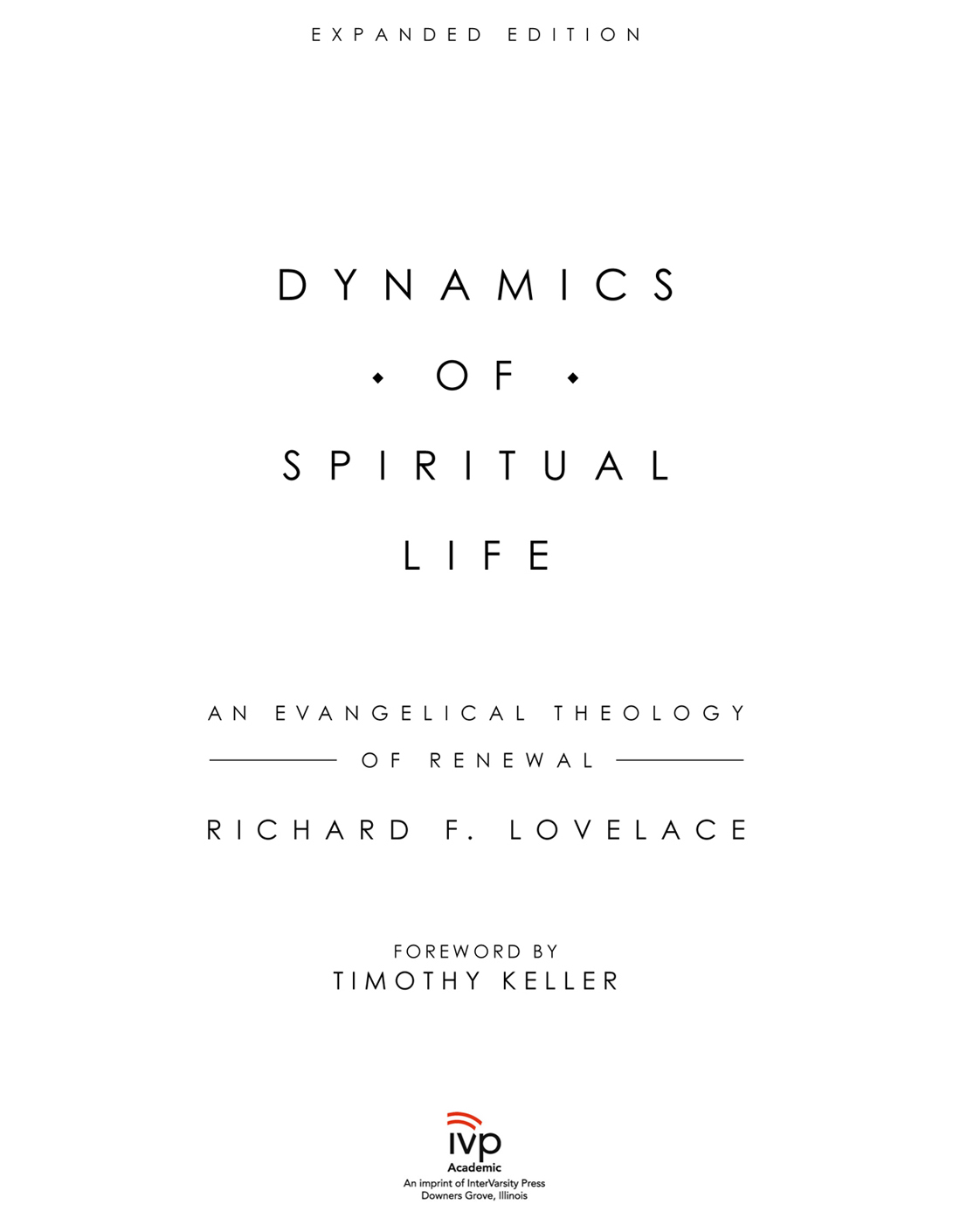Sommaire
Pagination de l'dition papier
Guide
InterVarsity Press
P.O. Box 1400, Downers Grove, IL 60515-1426
ivpress.com
email@ivpress.com
First edition 1979 by InterVarsity Christian Fellowship of the United States of America.
All rights reserved. No part of this book may be reproduced in any form without written permission from InterVarsity Press.
InterVarsity Press is the book-publishing division of InterVarsity Christian Fellowship/USA, a movement of students and faculty active on campus at hundreds of universities, colleges, and schools of nursing in the United States of America, and a member movement of the International Fellowship of Evangelical Students. For information about local and regional activities, visit intervarsity.org.
Scripture quotations, unless otherwise noted, are from the Revised Standard Version of the Bible, copyright 1946, 1952, 1971 by the Division of Christian Education of the National Council of the Churches of Christ in the U.S.A. Used by permission. All rights reserved.
Acknowledgment is made to the following for permission to reprint copyrighted material: The poem Gratitude to the Unknown Instructors, reprinted with permission of Macmillan Publishing Co., Inc. from Collected Poems by William Butler Yeats. Copyright 1933 by Macmillan Publishing Co., Inc., renewed 1961 by Bertha Georgie Yeats. From Things to Come by Herman Kahn and B. Bruce-Briggs. Reprinted with permission of Macmillan Publishing Co., Inc. Copyright 1972 by the Hudson Institute, Inc. From Stars, I have seen them fall from The Collected Poems of A. E. Housman.
Copyright 1936 by Barclays Bank Ltd. Copyright 1964 by Robert E. Symons. Reprinted by permission of Holt, Rinehart and Winston, Publishers. The Society of Authors as the literary representative of the Estate of A. E. Housman, and Jonathan Cape Ltd., publishers of A. E. Housmans Collected Poems. From the lyrics to Why Dont You Look into Jesus, from the album Only Visiting This Planet, Street Level Records. Reprinted with permission of Solid Rock RecordsA Division of Solid Rock, Inc. The chart on the Dynamics of Spiritual Life (fig. 1) is adapted from Homosexuality and the Church. Copyright 1978 by Richard F. Lovelace. Published by Fleming H. Revell Company. Used by permission. Chapter seven is a revised version of The Sanctification Gap, which first appeared in Theology Today (January 1973) and is used with permission. Chapter nine is a revised version of Live Orthodoxy, which first appeared in Encounter (Autumn 1974) and is used with permission.
Portions of the foreword are adapted from Tim Keller, Revival (Even) on Broadway, Redeemer City to City blog, December 21, 2010, www.redeemercitytocity.com/blog/2010/12/21/revival-even-on -broadway; Keller, Defining a Gospel Movement, Redeemer City to City blog, August 10, 2017, www.redeemercitytocity.com/blog/defining-a-gospel-movement; Timothy Keller, Center Church (Grand Rapids: Zondervan, 2012); and Justin Taylor, Why You Should Really Consider This 30-Year-Old Book: Keller, Powlison, and Ortlund, The Gospel Coalition blog, www.thegospelcoalition.org/blogs/justin-taylor/why-you-should-really-consider-this-30-year-old-book-keller-powlison-and-ortlund (used by permission).
Cover design and image composite: Faceout Studio
Images: the Maest: Mondadori Portfolio/Electa/Antonio Quattrone/Bridgeman Images circular paint splatter: CSA Images/Getty Images
ISBN 978-0-8308-5493-6 (digital)
ISBN 978-0-8308-5288-8 (print)
This digital document has been produced by Nord Compo.
To my teachers:
Donald Mostrom
Susan Beers
Jonathan Edwards
Cotton Mather
What they undertook to do
They brought to pass;
All things hang like a drop of dew
Upon a blade of grass.
W. B. Yeats, Gratitude to the Unknown Instructors
Foreword
Timothy Keller
Dynamics of Spiritual Life is a book we cant do without. Richard Lovelaces classic was amazingly prescient when first published forty years ago, and it is still relevant to many of todays ministry issues.
Earlier in my ministry, when church planters came to me and asked, What should I read? I always gave them two books: Michael Greens Evangelism Through the Local Church (Hodder & Stoughton, 1990) and Lovelaces Dynamics of Spiritual Life. The Green book was a practical how-to guide for getting the gospel out. Lovelaces book gave leaders a way of using the gospel in peoples lives that not only brought them to saving faith but also kept renewing them individually and corporately.
Lovelaces expertise is in the history of revivals. Today there is less interest in and desire for revival than there was a generation ago. Every traditionMethodist, Pentecostal, Reformed, and so onalso has a somewhat different conception of what revival entails. Lovelace, however, worked to discover what all revivals have in common. He reached a conclusion that has become a key component of my own writing and teaching: revivals and renewals are a necessary part of the life of the church. Because of the default mode of the human heart, revival is a pattern repeatedly used by the Holy Spirit to reconnect Christian communities with the power of the gospel.
I took several courses with Richard Lovelace at Gordon-Conwell Seminary, including the class by the very title Dynamics of Spiritual Life, right after I arrived in the fall of 1972. The following semester I took his course on the history of evangelical revivals and awakenings. The content of those classes eventually became this book. Under Lovelace I read deeply in Jonathan Edwards and also met his modernizers, D. Martyn Lloyd-Jones, J. I. Packer, and Lovelace himself, who distilled Edwardss thought in Dynamics. Their descriptions of revival were an enormous help to me in understanding what my wife, Kathy, and I had recently seen, albeit briefly, on our own college campuses.
When I became a Christian, around January 1970, I was attending an InterVarsity Christian Fellowship chapter at Bucknell University. At that time the InterVarsity groups on campuses throughout central Pennsylvania were all small and sleepy. Then during the 19701971 school year there was an explosion of spiritual interest. By the end of the year we had about one hundred students attending meetings, up from the longtime average of five to fifteen. Dozens of people came to Christ, though there had been no outreach programs to speak of. I also remember going that spring to the central Pennsylvania area retreat and discovering that similar changes had spontaneously been occurring on most of the other campuses, including Allegheny College, where Kathy was a student.
Years later, during the first eighteen months after founding Redeemer Presbyterian Church in New York City, we again saw the spiritual dynamics we had seen on those campuses. At that time (19891991) Manhattan was crime-ridden and hard hit by a recession. There were very few evangelical churches in the whole metro area, and Christians were not moving into the city, only out of it. Yet we saw about one hundred people come to faith and our church grow from zero to hundreds in attendance in just a few monthsall in a location where no one said it could happen.
What I learned firsthand from these experiences was this: Revivals can last several years or only a few weeks. They can be widespread, affecting a whole town or region or country, or more narrow in scope, such as within one congregation. But they are always seasons in which the ordinary operations of the Holy Spirit are greatly intensified. We cannot

